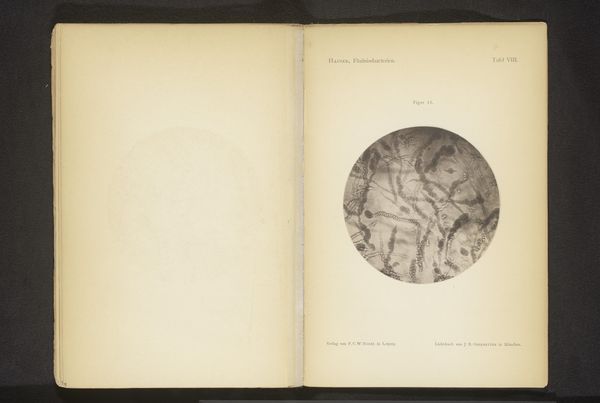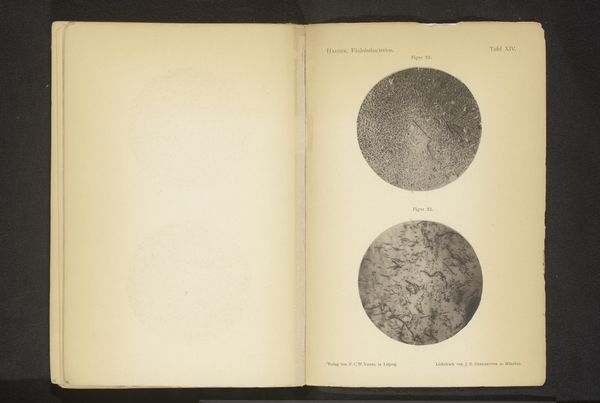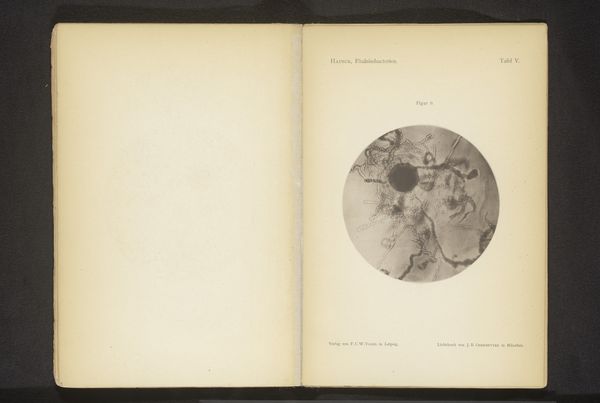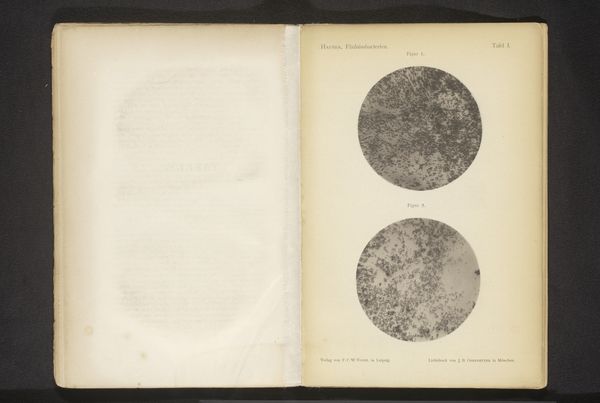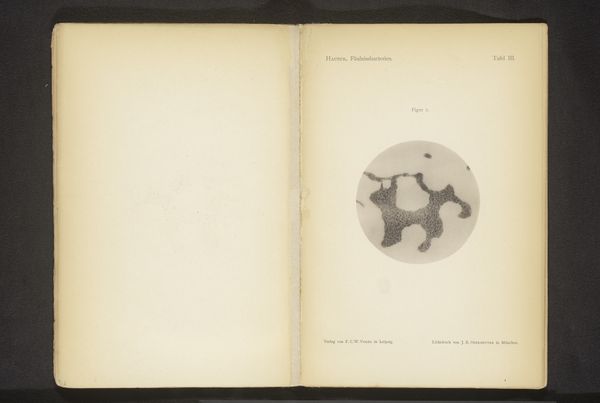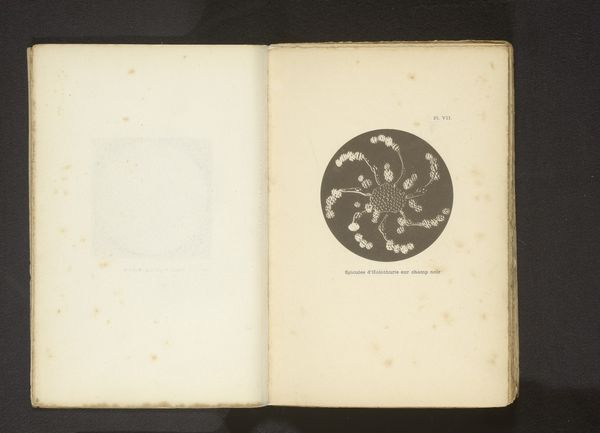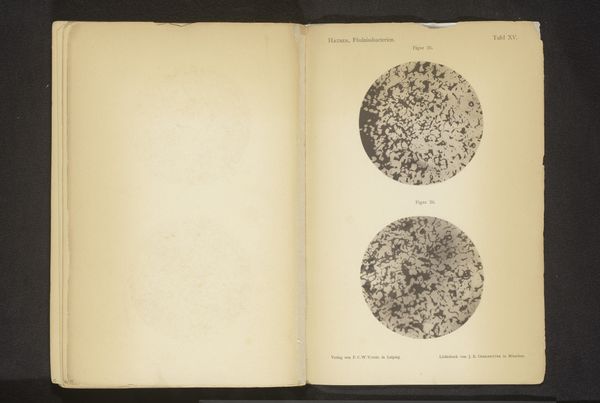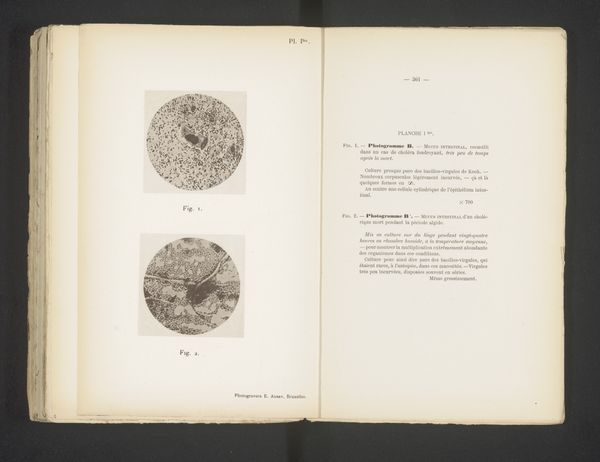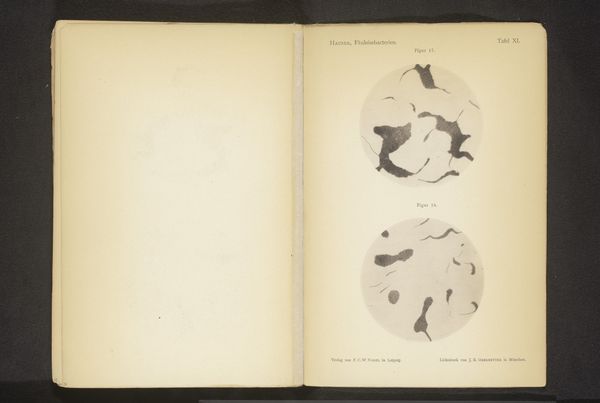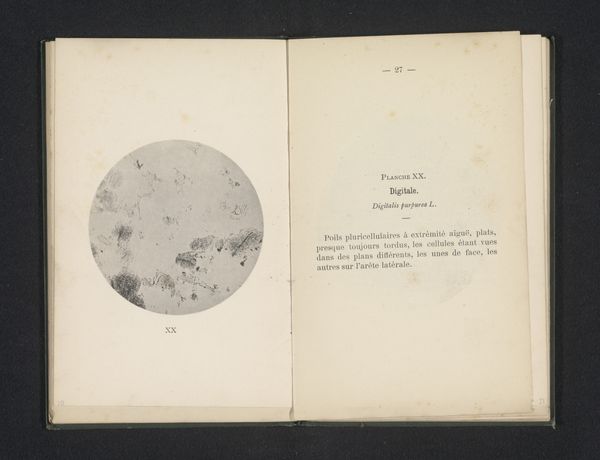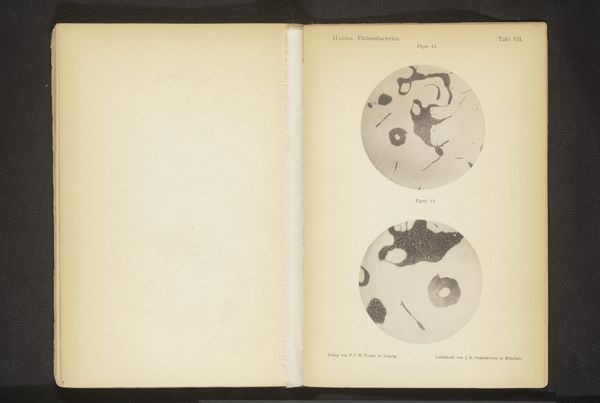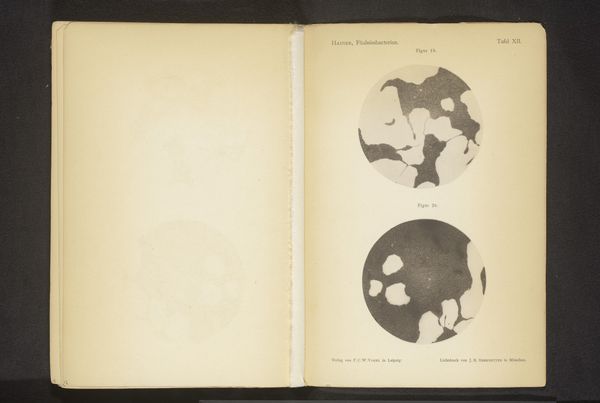
print, paper, photography
#
still-life-photography
# print
#
paper
#
photography
#
modernism
Dimensions: height 112 mm, width 112 mm
Copyright: Rijks Museum: Open Domain
Editor: This is “Microscoopopname van bederfbacteriën,” a photograph from before 1885 by Gustav Hauser, presented as a print on paper. It's incredibly intriguing how something scientific, like this magnified view of bacteria, can be presented with such care in what appears to be a printed book. It makes me wonder about the intended audience and how it was received. What do you see in this piece, and how does its presentation impact its meaning? Curator: This piece is fascinating from a historical perspective. Prior to germ theory truly taking hold in the public imagination, visualizing the microscopic world through images like this played a key role in shaping societal understanding and fears about disease. Consider how the act of publishing this image, almost like an illuminated manuscript of microscopic life, elevates its status and grants scientific authority to the new field of bacteriology. It's less about the beauty of bacteria and more about the cultural anxieties they represented and the rising importance of scientific institutions. Do you think this photograph intended to educate, warn, or perhaps even reassure the public? Editor: I think there is a degree of public warning conveyed through scientific proof. It feels educational, like they are showing the invisible dangers lurking all around. If photography served the societal role of scientific truth-teller, where does that place art that's presented as a matter of public health? Curator: Precisely! In the late 19th century, photography carried immense weight as objective truth. So, its application in bacteriology served as a potent tool to translate scientific findings into public understanding. An image like this isn't just art, it is public rhetoric, playing a vital role in how new scientific paradigms took root and influenced public behavior. Consider the role photography played in public sanitation campaigns in the early 20th century! Editor: So, it is a tool in society's march toward modernization and scientific enlightenment. Curator: Exactly, shaping both our perception and relationship to an invisible world. It really underscores how visual culture plays an active part in broader social change. Thanks for your perspective! Editor: And thank you for shining light on the intersection of public sentiment and scientific progression!
Comments
No comments
Be the first to comment and join the conversation on the ultimate creative platform.
